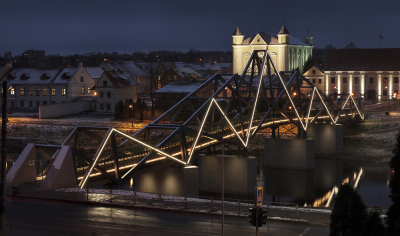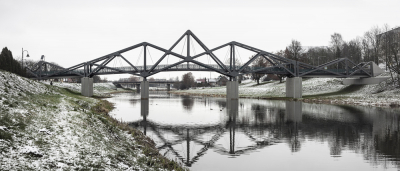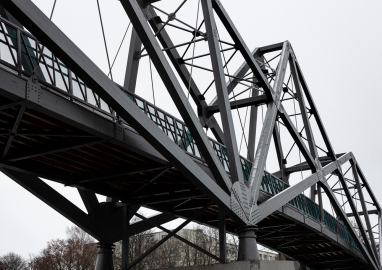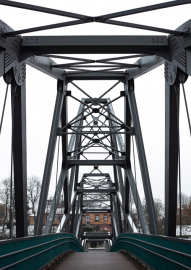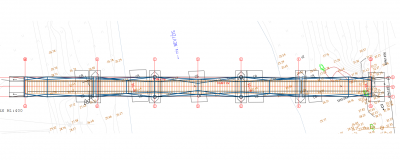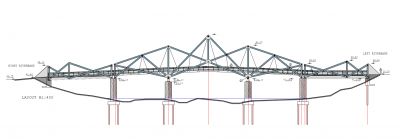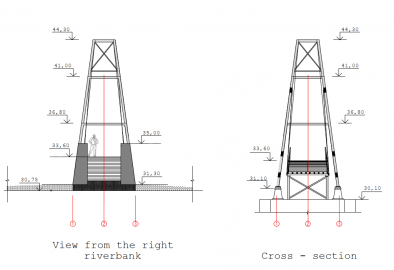Wooden Pedestrian Bridge
New wooden footbridge over the river Nevėžis in the central part of Kėdainiai Old Town, Lithuania. The new bridge for pedestrians replaced an old former bridge that was both, aesthetically unpleasing and in critical structural state.
The river Nevežis runs through the middle of Kėdainiai town, practically dividing the town in half and cutting access to the Old Town. A bridge is required for residents to allow easy access to the Old Town. The old bridge and many bridges before that stud in the same place date back to the year 1602. All of these bridges has one main goal - allow access to the main square of the Old Town. The new bridge was built in the same place after completely demolishing the old bridge. The projects main goal was to completely replace the existing old bridge and also provide an architectural attraction to the Old Town. Many of the old bridges that existed before were mainly made of wood, thus the decision was that the new bridge should also be made of wood.
Main requirements that were issued by the client – the bridge has to be made of wood and should have no more than 4 piers with a bigger span in the middle, to allow ships to pass. Main goal was to make the bridge an architectural attraction for the Old town, but also not to stand out of the surrounding structures. Much of the effort was applied to the solution of lightning. Untraditional lightning solutions were applied, lighting the walkway directly from underneath the rails and decorative lightning to the outside of the bridge that highlite the triangle form.
All of the bridges main bearing elements – trusses and walkway deck beams - was built using glued laminated wood beams. The walkway deck is connected to truss nodes by steel tension rods. Walkway deck bearing beams in both heads of the bridge are made of reinforced concrete, but they are not exposed, thus creating an illusion of the wooden trusses being the main structural bearing elements. All materials except the walkway deck top cover planks have a protective coating, selected to protect the wooden, steel and concrete elements from environmental impact and reduce maintenance costs. The walkway deck top cover planks were left intentionally uncoated to provide the feel of a wooden bridge and foreseeing in the future easy access for maintenance and replacement of these elements.

